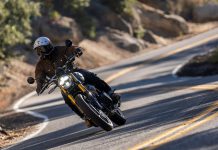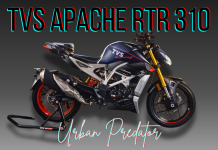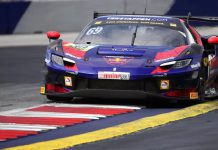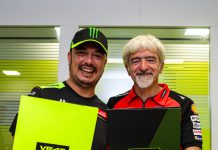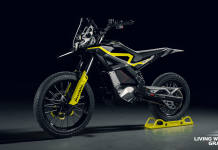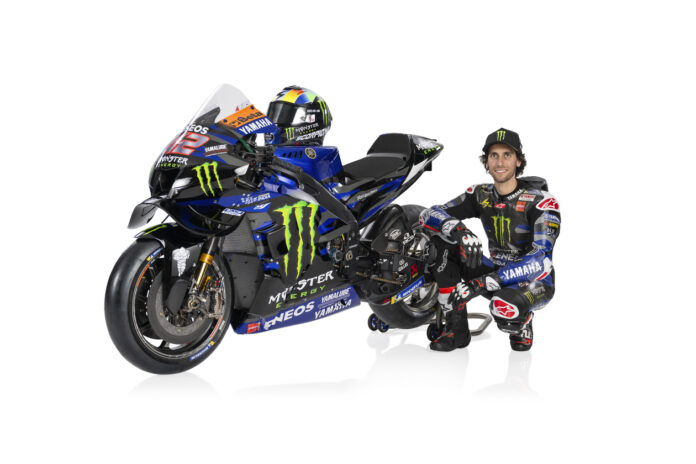The Dynamic Duo of Quartararo and Rins: A Blend of Speed and Style
In the high-speed, adrenaline-fueled world of MotoGP racing, the partnership between Fabio Quartararo and his new teammate Alex Rins at Monster Yamaha MotoGP is stirring up quite the conversation. This pairing is a fascinating mix of similar riding styles but a stark contrast in their approach to motorcycle electronics, sparking interest across the MotoGP community.
Quartararo and Rins: Speed Demons with a Shared Riding Style
When it comes to pushing the limits on the track, both Quartararo and Rins have showcased an impressive blend of talent and technique. Their riding styles, marked by precision and a need for speed, have drawn them together, proving beneficial for both racers.
Quartararo, with his razor-sharp focus and impeccable track record, finds a mirror in Rins’ aggressive yet controlled approach to racing. This synergy between the two has become a cornerstone of their partnership, allowing them to learn from each other and push the envelope even further.

The Electronics Divide: Rins’ Old School Approach
Where things get really interesting is in their approach to motorcycle electronics, a critical aspect of modern MotoGP racing. Quartararo has been open about the team’s need to advance in this area, emphasizing its importance in today’s competitive field.
However, Rins has adopted what some might call an “old school” approach, relying less on electronics and more on raw skill and intuition.
Rins’ preference for minimal electronic intervention is not something new. His career has seen him adapt to different bikes and teams, always carrying his distinct style of relying on throttle control and a hands-on feel of the bike. This approach, reminiscent of racing styles before the widespread integration of advanced electronics, sets Rins apart in a field that’s increasingly dependent on technology.
Quartararo’s Experiment with Rins’ Setup: A Learning Curve
The partnership took an intriguing turn during winter testing when Quartararo decided to give Rins’ electronics setup a go. The experiment was an eye-opener for Quartararo, who concluded that Rins’ “light touch” approach to electronics wasn’t quite to his liking. This divergence in preferences highlights the unique attributes each rider brings to the table and how personal and subjective the setup of a MotoGP bike can be.
The Aerodynamics Angle: Rins’ View on Bike Performance
Moving beyond electronics, Rins has also shared insights on the significance of aerodynamics in MotoGP. Transitioning from Suzuki to Honda, and now to Yamaha, Rins has experienced firsthand the impact of aerodynamics on bike performance. He argues that in the current state of MotoGP, the engine configuration—be it V4 or Inline 4—plays second fiddle to aerodynamic efficiency.
It sheds light on the evolving dynamics of MotoGP racing, where aerodynamics are increasingly seen as a critical factor in enhancing bike handling and speed.
Looking Ahead: Experimentation and Adaptation
As the MotoGP season progresses, both Quartararo and Rins are exploring new setups and strategies. Rins, in particular, is keen on experimenting with the setup of his M1, aiming to resolve some of the turning issues faced in the initial rounds.
This willingness to adapt and test new configurations could potentially unlock new levels of performance for both riders, making the Monster Yamaha team a formidable force on the track.
The COTA Challenge: A Test of Strategy and Skill
The upcoming round at the Circuit of The Americas (COTA) is poised to be a significant milestone for Quartararo and Rins. With Rins’ previous victory at COTA and the track’s demanding layout, it will be a true test of their partnership’s strength and their individual approaches to racing.
How they leverage their shared knowledge and divergent tactics in electronics and bike setup will be crucial in navigating the challenges of this iconic circuit.
Conclusion: A Partnership Fueled by Diversity
The alliance between Fabio Quartararo and Alex Rins is a testament to the dynamic nature of MotoGP racing. Their collaboration highlights how differing approaches, especially in terms of electronics, can coexist and complement each other, leading to mutual growth and improved performance on the track.
As they continue to navigate the balance between speed, style, and technology, the MotoGP world watches eagerly to see how this partnership evolves and shapes their journey through the season.
Your Go-To FAQs on Quartararo and Rins’ MotoGP Partnership
What Makes Quartararo and Rins Such a Great Team?
Short answer: Speed and a shared riding style! Both Fabio Quartararo and Alex Rins are fast, really fast, and they have a similar way of handling their bikes on the track. This similarity helps them learn from each other, making them a dynamic duo in the MotoGP world.
How Do Quartararo and Rins Differ in Their Approach to Racing?
Let’s get into it: The main difference lies in their use of electronics. Quartararo is all for leveraging advanced electronics to push performance, while Rins prefers a more hands-on, “old school” approach, relying more on his skills and less on the tech. It’s a classic case of tech versus touch.
Did Quartararo Ever Try Rins’ Setup?
Yep, he did! During winter testing, Quartararo experimented with Rins’ lighter electronic setup but didn’t find it to his liking. It goes to show that what works for one rider might not suit another, emphasizing the personalized nature of MotoGP racing.
What’s Rins’ Take on MotoGP Bike Performance?
Aero over engine: Rins believes that in today’s MotoGP, the engine configuration (V4 or Inline 4) isn’t as crucial as the bike’s aerodynamics. Good aerodynamics can significantly enhance how the bike turns and handles overall, according to him.
Are Quartararo and Rins Planning to Change Their Approach?
Always tweaking: Especially Rins, who is keen on experimenting with his Yamaha M1 setup. Both riders are open to adjustments to tackle specific issues, like turning difficulties. Which could lead to beneficial changes for both.
How Will The COTA Race Test Their Partnership?
Big test ahead: The Circuit of The Americas (COTA) is a challenging track, and Rins has a history of doing well there. How Quartararo and Rins apply their shared knowledge and individual strategies in this race will be a real test of their partnership’s strength.
What’s the Biggest Takeaway From Quartararo and Rins’ Team-up?
Diversity is key: Their collaboration proves that different approaches, especially regarding bike electronics, can lead to success. By combining their strengths and learning from their differences. Quartararo and Rins are setting a great example of teamwork in the fast-paced world of MotoGP.


